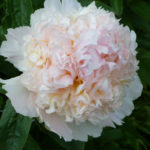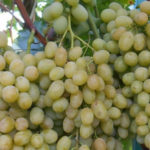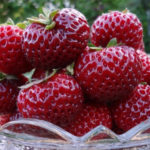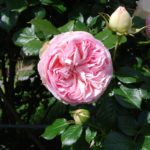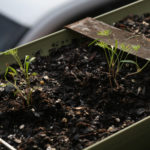Strawberry care in spring
If the planting of strawberries was carried out in the fall, then in the spring, after the soil thawed, they make a "mandrel". It consists in adding soil to bare roots and in releasing excessively buried plants. If not all the strawberry bushes survived the winter, then new ones should be planted instead of the dead.
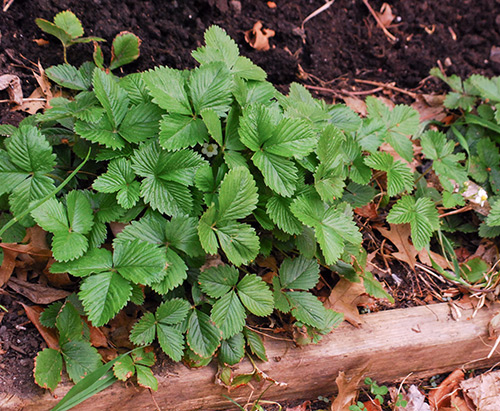
Planting fruiting strawberries also require spring care. In dry weather, old dried leaves are removed, as well as those that have signs diseases... It is better to burn them or send them to the compost heap. While harvesting the leaves, the rows of strawberries are loosened.
If the plants are planted on sod-podzolic or light sandy and sandy loam soils, then they are fertilized before loosening. For this, nitrogen fertilizers are used, 3-4 grams of active ingredient per square meter.
On poor soils, plants develop slowly and poorly. In this case, fertilizing with organic fertilizers in liquid form with a regularity of 1 time in two weeks will be useful. For this, bird droppings and mullein, diluted with water in a ratio of 1:10 or 1:15, are suitable.
In the spring, attention should be paid to protection from pests. Raspberry-strawberry flower beetle (weevil) damages plants during the extension of peduncles. An effective measure against it is spraying with a solution of Fufanon at a concentration of 0.3%. It should be borne in mind that strawberry varieties are early, mid and late ripening. The timing of the extension of peduncles is different for them, therefore, processing should be planned taking into account the existing phase.
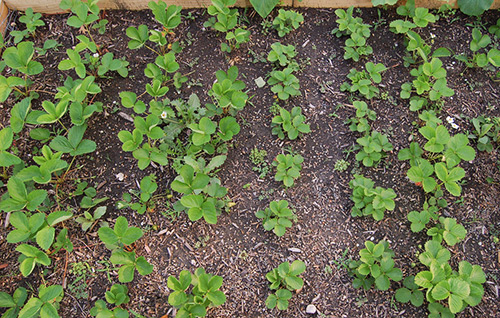
A decoction of wormwood will also help scare off the weevil. For its preparation, take 800 g of dried wormwood and 10 liters of water. Wormwood is poured with water, infused for a day, after which it is boiled for half an hour. Before use, the broth is diluted twice. Pine branches and bunches of wormwood spread in the aisles also scare off the pest.
Another spring problem is recurrent frosts. They can seriously damage flowering strawberries. A decrease in temperatures leads to a blackening of the receptacle, and the number of ugly berries increases. To protect against frost, the plants are covered with special materials (Spunbond, Lutrasil) and improvised means. Newspapers, straw, film, burlap and more will do.
If the weather conditions during the flowering of strawberries are unfavorable, for example, cold and rainy, then the number of berries decreases, their weight decreases, and the number of ugly fruits increases. There are methods for increasing tying. This is spraying strawberries with a solution of calcium nitrate at a concentration of 0.3%. Flowers can be pollinated with a brush, puff, or attract bees by sprinkling the plants with a sugar solution (for 100 g of sugar, one liter of water and 2 g of boric acid).
Before flowering, the aisles are mulched. This prevents weeds from growing. Also, a layer of sawdust, grass, straw or other materials reduces berry contamination and gray mold damage.
